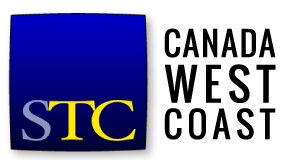What is instructional design?
Instructional design is the development of education materials, content, and delivery modes. Analysis of learner needs is an important initial stage, as is the identification of desired learning outcomes. Education technology is highly viable – you’ll hear terms like LX (learner experience) and LMS (learning management system) drawing from everything from user experience to neuroscience. Content curation may include modules, lessons, and assessments.
Instructional designers strive for a quality of instruction based on meaningfulness and relevancy for the learner. Development, testing, and evaluation are pivotal stages of instructional design. With a reliable methodology in place, evaluation of both learner and instructor is a crucial final step.
Instructional design in a day:
An instructional designer might tackle the following projects, designing and developing:
- Lessons plans
- Handouts
- Rubrics
- Interactive lectures
- Visuals, video, and digital media
- Student and teacher assessments
- Curriculum maintenance
- Educational technology support materials
Process and tools:
Instructional design uses Instructional Systems Design (ISD) to provide process frameworks. ADDIE is a typical framework model that serves as a 5-phase guideline to help build effective education and training tools. The 5 phases include:
- Analysis
- Design
- Development
- Implementation
- Evaluation
In order to roll out these phases, an instructional designer will need to be familiar with current e-learning authoring tools and platforms. For 2017, PCMag rated Articulate Storyline 2 and Trivantis Lectora Inspire highest, while iSpring Suite 8 did well and at a lower price point. TechSmith Camtasia and Adobe Captivate continue to be popular.
A knowledge of GUI (Graphic User Interface) development would also be useful.
Take an online trip to the BCIT Learning and Teaching Centre:
As many instructors are SMEs coming directly from their industry, BCIT’s Learning and Teaching Centre (LTC) offers downloadable resources to help support their faculty. The LTC writing and editing team stresses that instructional design writing needs to be easy to understand, grammatically correct, and have clear, consistent proposals (for potential new programs, curriculum changes, or program reviews).
What’s in store for instructional design?
Education forecasts never disappoint when it comes to providing food for thought. Here’s the latest on what to expect in 2017 and beyond with instructional design trends:
- Augmented reality and virtual reality
- Personalization and contextualized e-learning
- Values-based emphasis (millennials-inspired)
- Cultural sensitivity (incorporation of a cultural analysis phase)
- Microlearning (‘bursts’ or chunks heavy on video curation)
- Responsive design
- Blended: social, mobile, gamification
- Learning analytics through LMSs
How do I become an instructional designer?
Instructional design is yet another discipline where its own methodology and technical communication principles converge. Purdue University suggests a “Master of Science in Education (MSEd) in Learning Design and Technology is one of the best qualifications for educators and administrators looking to specialize in instructional design.”
For localized support and distance ed opportunities, check out the links below from STC, UBC, and Royal Roads:

